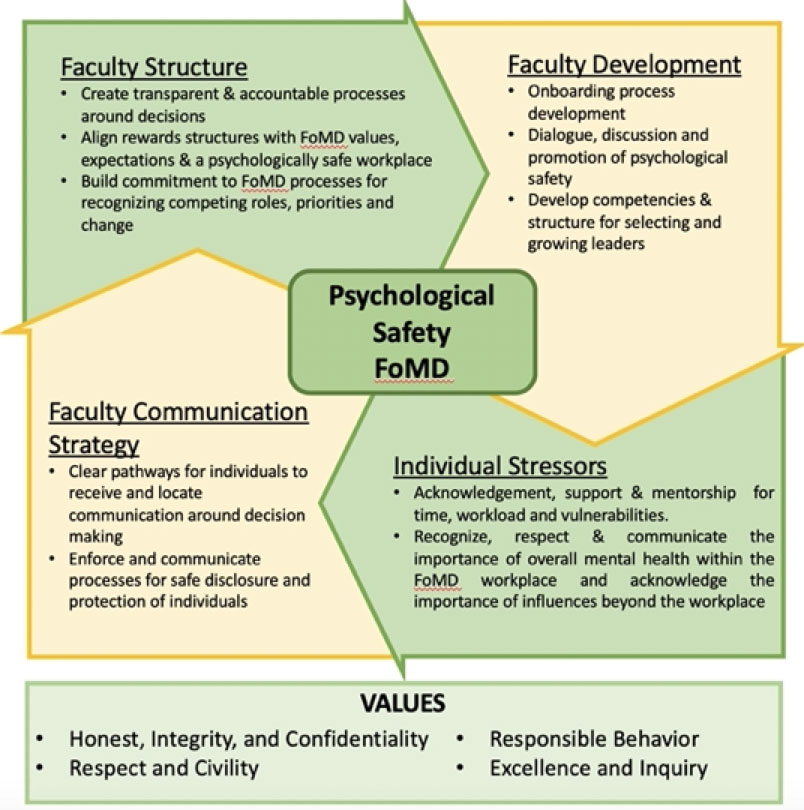Psychological Safety
Psychological safety was defined by Amy Edmondson (The Fearless Organization, 2019) as “a climate in which people are comfortable expressing and being themselves.” She refers to examples of psychological safety such as feeling safe to raise a different point of view in a meeting, bystander intervention etc.
Psychological safety is mandated in all workplaces across Canada (National Standard for Psychological Health and Safety in the Workplace), at the University of Alberta, and Alberta Health Services. Psychological safety can be measured (Samra J et al. Simon Fraser University. 2009-2020. Guarding Minds at Work website). Leaders are thought to be able to influence many of the factors that contribute to psychological safety within a workplace. The FoMD Strategic Plan (Vision 2025) highlights the importance of building psychological safety within the FoMD for all members.
Please contact the Office of Professionalism with questions around how to build psychological safety within your group setting.
Based on key stakeholders’ input, in 2020, the Office of Professionalism identified 4 FoMD Key Implementation Priorities to move towards psychological safety within our workplace:
- Faculty Structure;
- Faculty Development;
- Individual Stressors; and
- Faculty Communication Strategy.
